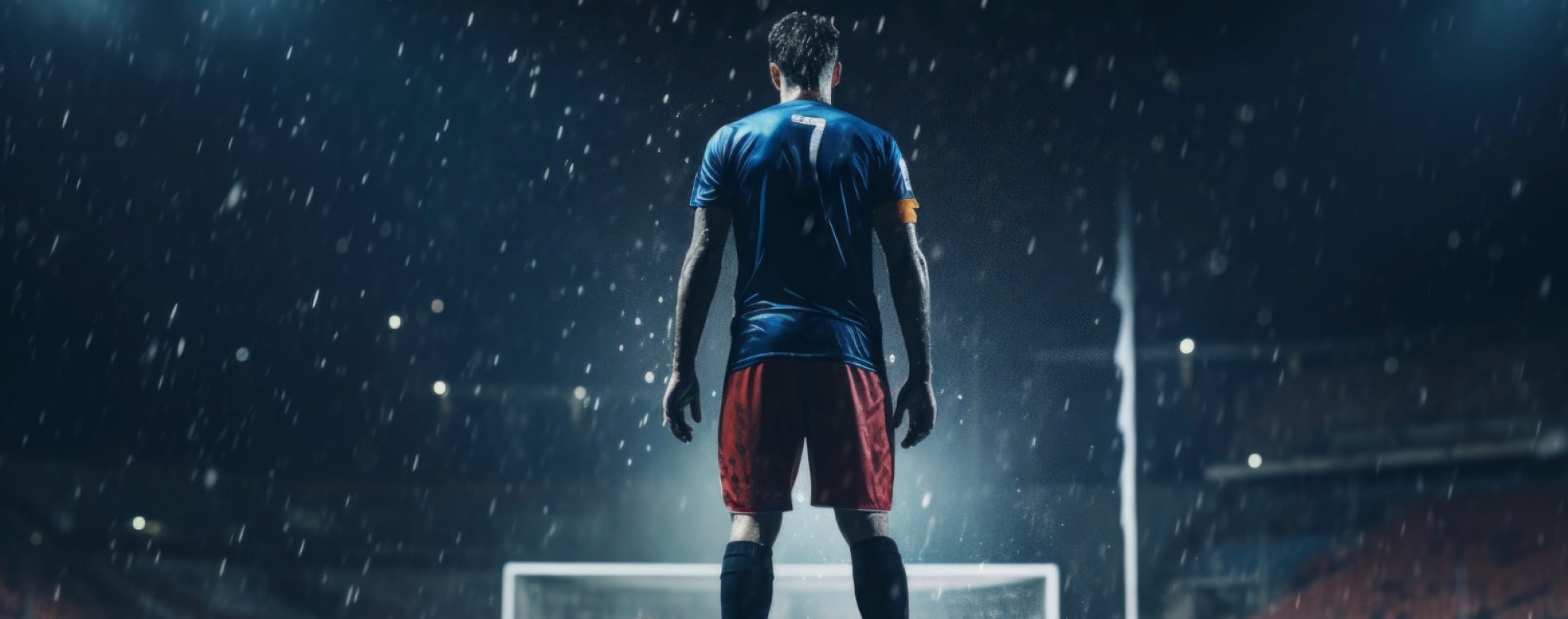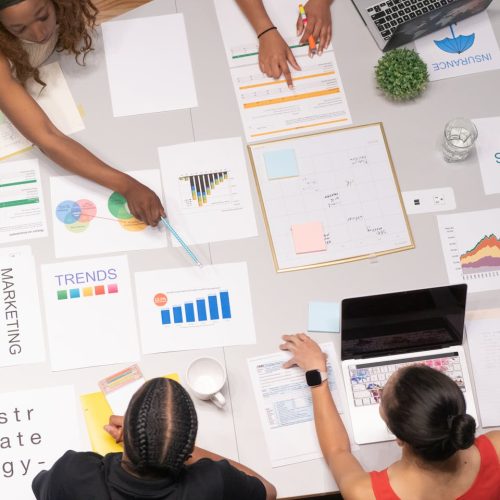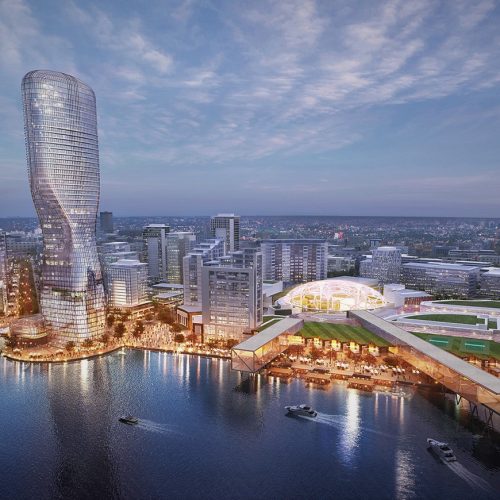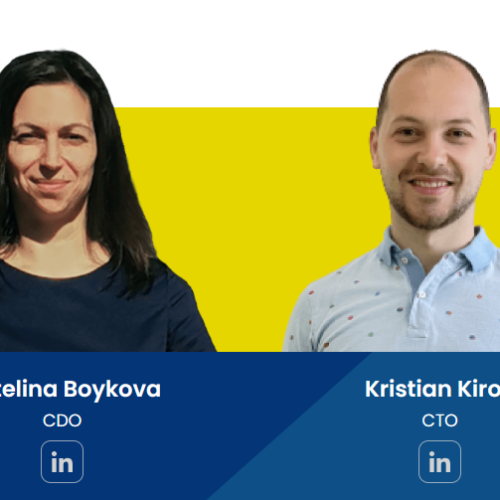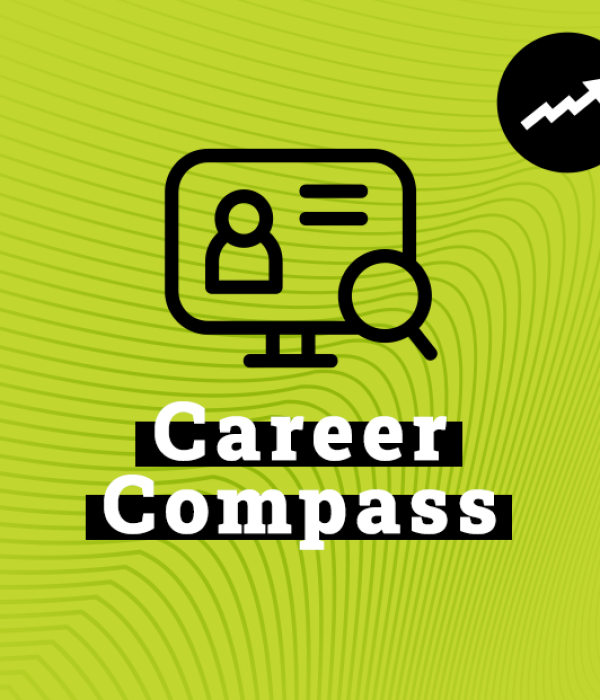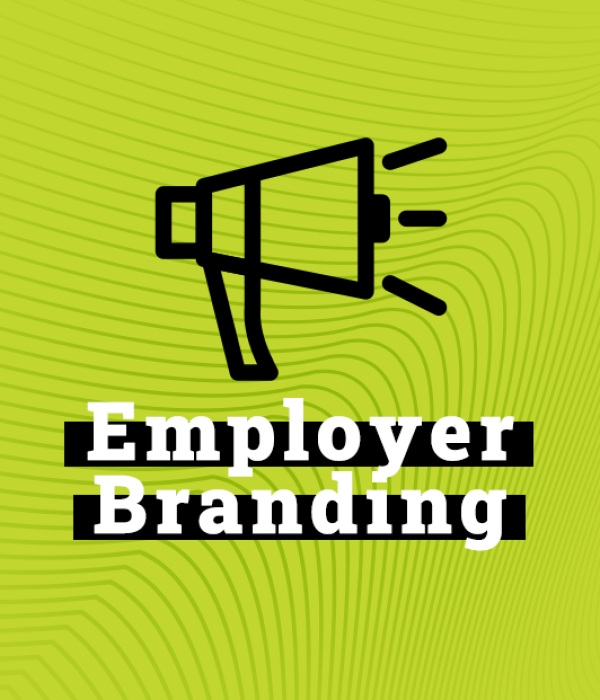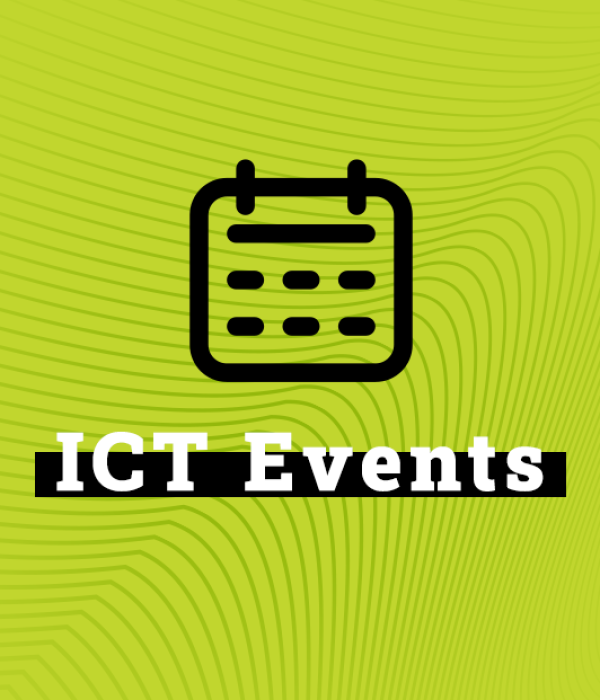You’re getting hyped up to watch your favorite football club this week. The team has trained tirelessly, strategized, and fans like you around the world eagerly await the spectacle about to unfold. Yet, amidst this charged atmosphere, a sudden news spreads like wildfire: a key player, instrumental to the team’s tactics and success, has been sidelined by a non-contact injury, just hours before an important game.
Bulgarian sports tech startup Barin Sports aims to tackle (pun intended) such narratives by revolutionizing injury prevention techniques and player monitoring technologies. Founded almost a decade ago, in 2015, Barin Sports’ advanced GPS tracking system provides accurate real-time data on athletes’ performance. In turn, this allows clubs to have comprehensive analysis and personalized training programs with a focus on avoiding non-contact injuries.
Last year, the company got a €2M investment from Capital Investments Fund (CIFund), a growth investment arm of the Bulgarian Development Bank (BDB). In June 2023, the startup also welcomed former Ballon d’or winner and ex-Real Madrid and Liverpool star Michael Owen as an investor.
Furthermore, in the same year the company also won the jury prize of the fifth edition of the growth program of Endeavor Bulgaria – Dare to Scale 2023.
In an interview with IT Logs, the company’s business development director Daniel Shopov reflects on the Barin Sports’ own journey, their commitment to revolutionizing sports technology for injury prevention and future plans such as smart textiles.
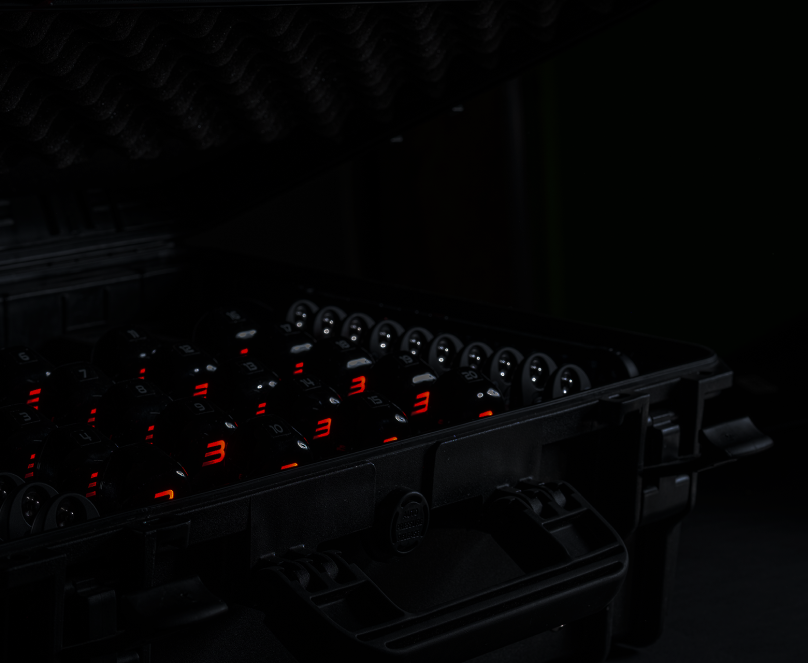
IT Logs: The focus of Barin Sports’ GPS tracking system is on avoiding non-contact injuries. Can you explain how this technology addresses this specific concern in the realm of sports performance?
Daniel Shopov: We started with the GPS technology and that’s what we are initially known for. The beginning of the company is a technological one, and it’s rooted in hardware. So, we first developed the hardware and it’s a hardware that is built to last. It’s built to only get better as we develop the software around it. We have very strong and robust software, but the way we build the technology is like a Tesla, with every new change in the software, every new update, it will only get better.
And then we decided to build on top of it. The GPS part is what most of the users are familiar with, but when we decided to build out the injury prediction piece. It’s actually a misconception in a lot of people that it’s just the GPS, because our work to predict an injury or to do the proper periodization of a player starts before we step onto the field or before they step in for a practice or a training session.
It has to do with all kinds of different data connected to the performance of the player. GPS data is one portion of it, or what is largely called GPS systems data. But then we’re also talking about medical tests, blood tests, for example. We’re also talking about anthropometric tests, biochemistry, biomechanics, all kinds of different tests, functional tests, contact and reaction time, body mass index – different types of data that helps us tell how ready a player is to take a workload today. Should you push them or should you let them rest? How fatigued they are, how tired they are, and ultimately, what is the likelihood of them to get injured?
And this is how we develop the built on top of the very strong hardware that we have. We built it out on top with this service, we call it a 360 degree service – Barin Sports 360 is the service that combines the GPS data with all the other performance related data that a club collects.
Injuries are affecting a lot of football clubs right now – do you have an estimated cost of how much this financially hurts those clubs?
Last year, just in the five big European football leagues – Italy, Spain, Germany, UK, and France, non-contact injuries cost the team’s direct cost of about half a billion euro. Clubs like Chelsea you know, they had between 80 and 110 injuries, non-contact injuries per player. Every player got injured three or four times, and that’s non-contact injuries – and for us non-contact injuries are avoidable injuries. And this half a billion is direct costs – this is just the salaries of the players sitting on the bench, or not even on the bench but being in the hospital or in rehab.
We are not discussing the indirect costs, finding a replacement, not qualifying for Champions League semi-final, final or getting out of the group stages, not selling merchandise, declining fan interests, because the results of the team are poor. All of these are indirect costs that bring the cost of a non-contact injury, four times five times more than it actually is.
And that’s where we come in – this is something that we can help. It’s not just about the technology, teams like Roma or Manchester City or whoever – they have all the technology in the world. They have all the toys in the world. Yet they are in the stage they are, people getting constantly injured.
So our question is, what’s the problem? If you have all the technology in the world and if you have all the data in the world, why aren’t you better at avoiding those injuries? We believe we are the best – our algorithm takes in not just the GPS data but so much more – sleep quality, nutrition, all of this this type of data in addition to what I mentioned earlier, we are at over 90% accuracy of non-contact injury prediction. So if we say, it’s 80 or 90% that this person is going to get injured, we are correct in that. And that’s the added value of what we’re doing.
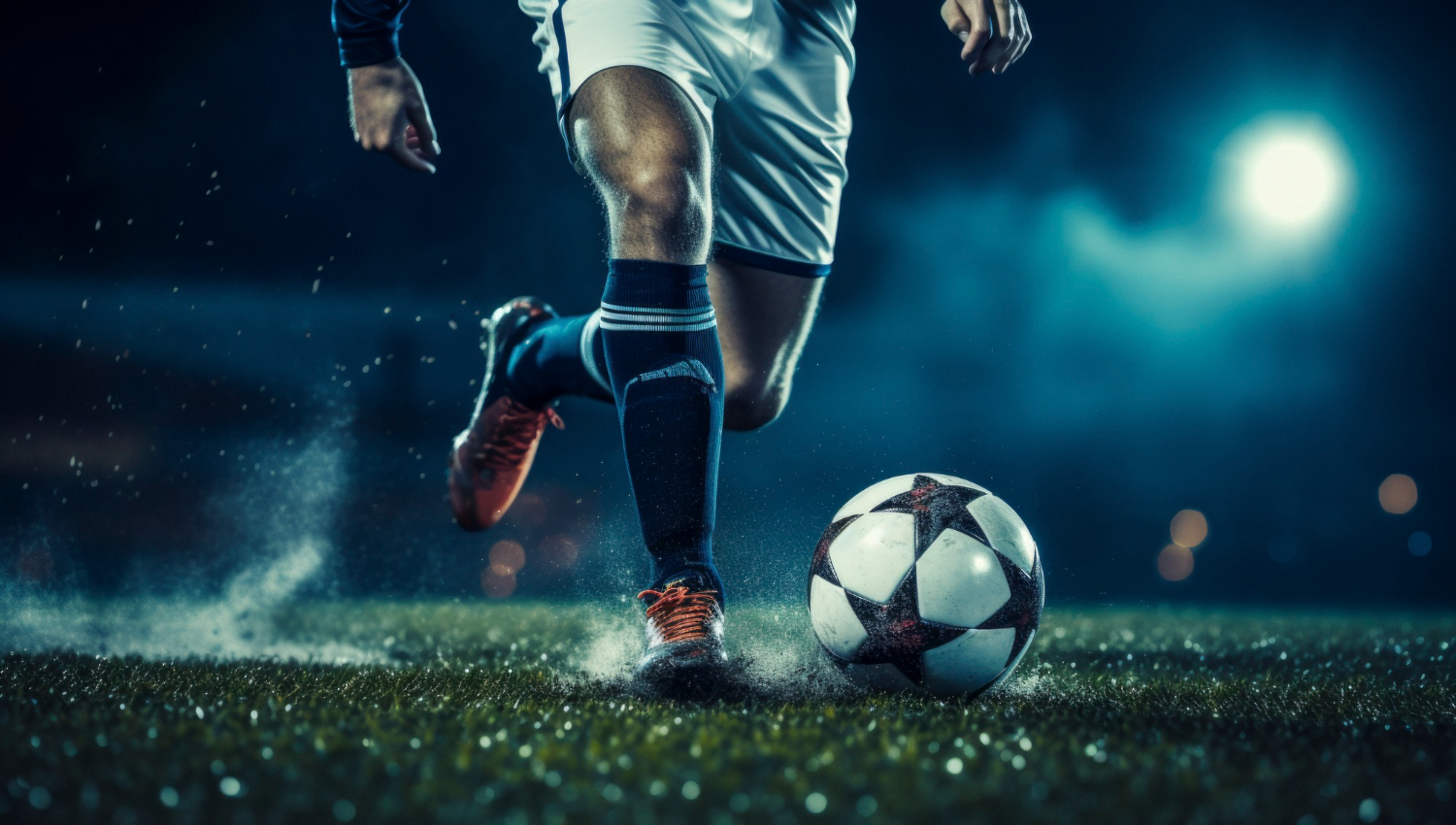
How did Michael Owen become your investor and what is the value that he brings for Barin Sports?
In the past he was a very injury prone player and basically that’s what drew him to us. It was by chance that we were able to connect with him and usually the way athletes work with companies is that they become just a paid brand ambassador. It’s like you hire them to be a spokesperson for you. But when we sat down with him and explained to him what we’re doing and you know, showed him all the different things. He realized exactly this, you know, if he had got access to what we do, his career at the top would have been twice could have been twice as long.
And that’s what convince him to become an investor with us, not to be a spokesperson for us, but to really identify himself with the company, to become part of the company, become part of our family, because he himself having in mind what he suffered in his career, is the best possible example of what could have been. He realizes what a difference we could have made for him while he was playing, and that’s why he wants to be our global brand ambassador.
For him it all started with pulled hamstrings – out of this half a billion that I mentioned earlier for non-contact injuries, a 100 million, or 20% of that was just pulled hamstrings, and that’s stuff that we believe is avoidable, something that we can address and that we can help players with. We can help prolong players’ careers, and we can also help teams protect their investment into the players.
The clubs themselves, they’ve invested in the players, not just salaries, but preparation, time, coaching all of that. And with the service that we could give them, we are helping the teams protect that investment in those players. That would also mean that the club could sell that player later on at a higher price, because of a service like ours.
With Michael, the biggest thing is that his persona and his brand is in likelihood of what we want to do. It’s the same as how we want to position ourselves. We want to be seen as the ultimate professional level experts. There are a lot of companies out there who collect GPS data or some sort of visual tracking data or whatever it could be. But in order to have professional level analytics, you need to have a professional level of collected data.
We are collecting our own data, and we are analyzing that data ourselves and we want to be seen as and we are positioning ourselves as the professional level experts who can give you that level of service. Something that a 40 million a year player deserves as a level of service. And that’s exactly the same view, the same thing that Michael projects, he is top level in what he does, whether it’s on the football pitch, whether it’s as a pundit, you know, as a commentator, he’s always top level professional. He’s always fully there, invested, prepared, knowledgeable and that’s where the sameness, the likelihood of what he does and what we do comes in as well, in addition to obviously what he recognises as as we are capable of doing.
How does Barin Sports envision its role in shaping the future landscape of the sportstech industry in Bulgaria and the broader SEE region?
In all honesty, sportstech is not on the radar of the investors at all. It’s outside of the verticals that are interesting to investors like fintech or green energy. So, sportstech falls by the wayside, and this is something I believe investors fail to realize. What we do is yes, it’s geared right now towards the professional athletes. But professional athletes are like Formula One cars – they are where we test new technology, they’re where we test new things. Everything that in our automobiles are cars that will drive every day, it was for its first time being tested in a race car – whether it’s a World Rally Championship, whether it’s with a Formula One or something else.
Athletes are the same way, the regimes, the way we take care of our bodies every day. Those athletes are the first to push the bodies at the limit or beyond those limits to find out how to take care of those bodies better, how to become better at the things that they do. Then, that trickles down to the everyday and that’s what a lot of investors fail to realise – what we’re developing right now is obviously geared to the top level athletes, but it will eventually trickle down to the mass public.
This is going to come in in the way we use the technology is going to come in, the way we use the data from this technology, how we analyse it, and what kind of recommendations we can give to the professional athlete and to you and me as we prepare for our weekend soccer game that we got to play with our friends, or prepare for a Champions League final, whatever it may be. The principles behind that are going to be the same and it’s going to be data driven – and it’s going to come from the data that we’ve collected.

In this regard, could you take us a bit through how Barin Sports got its investment of $2 million?
It wasn’t easy – we’ve talked to so many different investors, many different individuals and funds. All it takes is one basically – we found in the Capital Investment Fund, which is the the investment arm of the Bulgarian Development Bank, we found people who were willing to go beyond the surface. People who are willing to dive into the technology to understand not just the technology, but also our team that is sitting behind this technology. That is a well rounded team, not just from the technological side, but on the business development side.
We have our CEO, who is the originator of the idea and he has over a decade experience at IBM with micro and nano technologies, with micro electro mechanics. We have our CTO who won robotic car competitions, autonomous driving robotic cars, small models, and he won world level competitions that led him to specialize in Japan after that.
I have over 10 years of experience in business and project management, people development process building. We have a CFO who has over a decade of experience in insurance and financial management. That is a very well rounded team that is able to handle all of this part and that is where the value of what we do lies and that’s what the investors saw in us.
They went beyond just a skin deep review of things and they made a decision not just based on Excel files and projections, but on the potential of the market and the potential of the team. Also, on the vision of what we could build beyond just this one product or this one service that we have.
What was the role the Endeavor Bulgaria – Dare to Scale programme did for Barin Sports?
The Endeavor programme gave us more exposure to other investors. They gave us an opportunity for mentor sessions, for us to compare our notes against people who have already been there or we’ve seen other companies. We have our plans obviously, we have our things that we’ve planned to do or we’ve done and they were able to give us feedback and different perspectives.
There were lots of one-on-one mentoring sessions, but there were also group sessions where we got to meet people on different topics. From how to redefine our own niche, not to compete with the big ones but to kind of create our own niche which is what we’re doing with the 360 service.
How to build our sales channels, how to look at sales in a different perspective and how to build out our recruitment strategies, to get more people. All of this is an invaluable lesson as we’re scaling up our team, because this is what the investment allows us to do – to increase our team to start thinking bigger to start doing more more things.
That means bringing more people on board, that means onboarding them, teaching them, using their leveraging their expertise and the Endeavor programme with all the different sessions, mentor sessions and group sessions allowed us to gain even more knowledge when it came to this.
Looking ahead, what are Barin Sports’ plans and how do you plan to advance this technology?

We are defining our own market niche. Up until now, with the GPS technology only we are competing against the big players in that space. But when it comes to the 360 degrees sports science service, there is nobody in that space. The individual big teams hire their own analytic staff. But that’s not an option for a smaller team and what we’re doing is to democratize the access to sport science for even the smaller clubs, and that’s the first stage.
The longer play for us is smart textiles. We are working to have all of the tracking that we do on all of the different sensors that we have, not just in that one device, but in a smart garment, smart textile. That means we can add more sensors, we can get more accurate data, we could expand the types of data that we collect. And once it’s tested on professional athletes, that means we could go into mass clothes for you and me when we practice and when we wear them around something that helps us with our general health, something that helps us nutrition for ourselves or fatigue level.
And that is not done through a smartwatch, but that is done directly with the clothes that we wear every day. That’s the long play for us, in smart textiles and to do it in a sustainable way. Also, something that can withstand many wash cycles, you know, you know, not to be thrown away after 22 wash cycles but something that could withstand 2000 or 5000 wash cycles, which is key when it comes to making durable clothes. Everybody’s using some sort of a smartwatch, band, whatever it may be – now, our goal is to make that part of the base layer that you’re wearing or the t-shirt that you’re wearing, when you go jogging or when you go out for your weekend game with your buddies.
